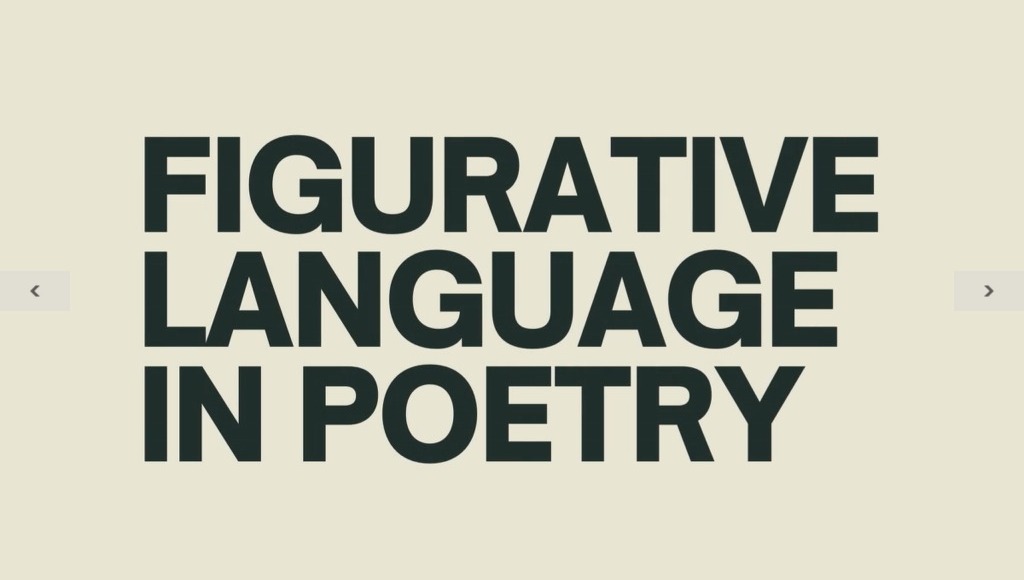Explore the art of figurative language in poetry, delving into irony, paradox, allusion, and imagery. Understand how these elements deepen meaning and enrich the reader’s experience, making poetry a vivid, emotion-stirring journey.
Figurative Language in poetry is a special way poets use words. It’s not just saying what things are but using words to paint pictures or show feelings that are more than what the words usually mean. Poets use this to make their writing really interesting and to help readers feel more connected. We’ll look at the different ways poets do this and why it’s so important.
Different Kinds of Figurative Language in Poetry:
There are 14 main types of figurative language poets use. They are alliteration, allusions, hyperbole, irony, litotes, metaphor, metonymy, onomatopoeia, paradox, personification, pun, simile, synecdoche, and understatement. Each one makes poetry special in its way.
Simile and Metaphor in Poetry:
Similes and metaphors are really common in poetry. A simile is when you compare two things using “like” or “as.” For example, saying, “Her eyes were like stars.” A metaphor is like a simile, but it doesn’t use “like” or “as.” So, you might say, “Her eyes were stars.” Both similes and metaphors help make a picture in your mind and share deeper meanings.
Personification and Anthropomorphism in Poetry:
Personification is when you talk about things that aren’t human as if they were. Like saying, “The wind whispered.” Anthropomorphism is like personification, but it’s more about giving human traits to animals or objects. Like “The sun smiled at us.” These make poetry feel more alive and help us connect with them emotionally.
Hyperbole and Litotes in Poetry:
Hyperbole is when you exaggerate something a lot to make a point, like “I’ve told you a million times.” Litotes is the opposite, where you make something seem less important to make a point, like “It’s not the best weather today.” Both of these make poetry more dramatic and fun to read.
Understanding Figurative Language in Poetry:
Figurative language is a special way poets use words. It’s not just saying what things are but using words to paint pictures or show feelings that are more than what the words usually mean. Poets use this to make their writing really interesting and to help readers feel more connected. We’ll look at the different ways poets do this and why it’s so important.
Different Kinds of Figurative Language in Poetry:
There are 14 main types of figurative language poets use. They are alliteration, allusions, hyperbole, irony, litotes, metaphor, metonymy, onomatopoeia, paradox, personification, pun, simile, synecdoche, and understatement. Each one makes poetry special in its way.
Also read: Generation X Characteristics: A Comprehensive Overview
Simile and Metaphor in Poetry:
Similes and metaphors are really common in poems. A simile is when you compare two things using “like” or “as.” For example, saying, “Her eyes were like stars.” A metaphor is like a simile, but it doesn’t use “like” or “as.” So, you might say, “Her eyes were stars.” Both similes and metaphors help make a picture in your mind and share deeper meanings.
Personification and Anthropomorphism in Poetry:
Personification is when you talk about things that aren’t human as if they were. Like saying, “The wind whispered.” Anthropomorphism is like personification, but it’s more about giving human traits to animals or objects. Like “The sun smiled at us.” These make poems feel more alive and help us connect with them emotionally.
Hyperbole and Litotes in Poetry:
Hyperbole is when you exaggerate something a lot to make a point, like “I’ve told you a million times.” Litotes is the opposite, where you make something seem less important to make a point, like “It’s not the best weather today.” Both of these make poetry more dramatic and fun to read.
Wrapping Up: The Power of Figurative Language in Poetry:
In the end, figurative language is super important for poets. It’s like a magic tool they use to make their words paint pictures and share feelings that go beyond the usual meanings. It lets poets talk about complicated feelings and ideas in a way that’s easier to get and feel connected to. There are lots of different types of figurative language in poems, like similes, metaphors, personification, hyperboles, litotes, irony, paradoxes, allusions, and imagery. Each kind helps make the poem special in its way and adds to what the poem means and how it makes us feel.
When you’re looking at figurative language in Poetry, it’s really important to think about where it’s used and the special effect it has. Knowing and using figurative language well can help poets make their poems really stand out and stick in our minds. It creates a stronger connection between the poem and the reader, making the poem more powerful and unforgettable.



